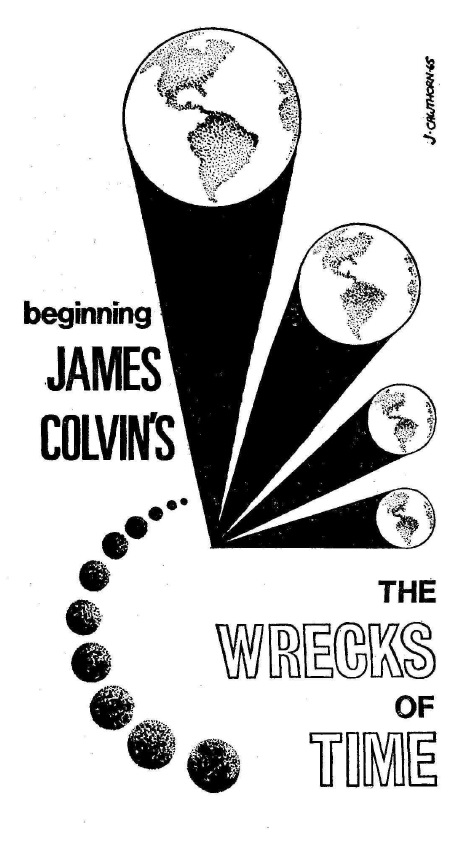[We've got another wonderful haul of books for you this month, many of which are well worth you're time. Be sure to read on 'til the end—you'll definitely catch the reading bug!]

By Mx Kris Vyas-Myall
The Hieros Gamos of Sam and An Smith by Josephine Saxton

Josephine Saxton is British author so, of course, her first book is about apocalypses and sexual awakening. However, it's a particularly skilled one.
The story: an unnamed teenage boy is wandering across the desolated British landscape alone, after an unexplained event has killed off all the other people. He comes across a baby girl and decides to bring her up. Together they try to understand the world that was left behind and what it means to be an adult.
You might assume this is either the usual “New Adam and Eve” story, or some kind of shock piece. However, Saxton manages to negotiate between these two paths skillfully. She describes the sexual emergences of both of them in matter-of-fact terms, which grounds the story within the dream-like atmosphere they inhabit.
As we go through, their comprehension of the world changes from child-like to a clear understanding of the facts of life. Even though their eventual relations could come across as disturbing given the age difference between the two, and the fact The Boy brought her up like a little sister, Saxton manages to largely negate this. She is able to show the passage of time well and, more importantly, give us the thought processes of both our leads to show they have free-will and are fully in control of their choices. For example:
She studied this for some time, and came to the conclusion that this was a drawing of a penis, and at what she had read and seen, she became hot all over, and in an excitable state.
There is also a clear sense throughout the text about the importance of symbolism. The Boy is constantly dismissing the importance of words and symbols but The Girl slowly shows him that deeper meaning is important.
For me, the key message that is brought out here is that they need to wipe away the sins of the past. The things that brought this world into being. When The Girl is bathing she sings about washing away her troubles in the River Jordan. And, when she gives birth, she insists on doing it in a place of death “to eradicate the source of evil here”. There is a central concept that simply them growing up and continuing the human race is not enough. Things have to change.
I picked up this novel as I knew it was related to The Consciousness Machine, one of my favourite novellas of last year. The connection raises significant questions. However, to discuss this requires mentions of later revelations of both works. As such, if you want to avoid knowing these facts, please feel free to skip to the next review.

As the name suggests, the novella is about a machine, WAWWAR, that can take the images of the unconscious mind and display them on a screen. The technician Zona is trying to decipher the meaning of The Boy and The Girl’s journey. There is also another piece of material relating to the hunt for a wild animal. These secondary and tertiary narratives are completely absent from the novel, which only contains The Boy and Girl’s tale in its totality.
As such, the conclusion of the book version is not about Zona learning the nature of the Animus, but The Boy, The Girl and The Baby deciding it is time to go home. So, they get on a bus, pay the conductor and go back to a fully furnished suburban house. The Girl then decides to get an early night as there is nothing on television on Tuesdays and puts the baby to sleep.
Now, a simple explanation for this could be we are literally seeing the film that was recorded by the WAWWAR. However, no hint of that is given and I think that is too large a leap to expect the average reader to make.
But to read it purely as a science fiction tale causes just as many problems. This sharp turn is nowhere hinted at in the text and in fact contradicts several core points created. Even if you could somehow accept the idea that The Boy went to live in a town that has been uninhabited, how does he have a house? How has he never seen a fully grown adult woman before? How does The Girl know about contemporary television schedules? How is the home not only still available to them after decades away, but with the utilities on?
So, what are we to make of this strange choice? There is no reason I could imagine that would force Saxton to expunge this frame from the longer book form. And the novel is indeed a good bit more explicit than the novella. So, a choice we must assume it is.
I like to believe it is opening us up to the freedom to understand the text in our own way. Zona’s meta-commentary on the events is merely one way of understanding a dream. You could also just as easily contend that the explosion in the chemist, shortly before they leave the town of Thingy, actually killed them all, suburbia representing the afterlife and Zona being like the angels in 40s cinema, discussing their existence.
Or, perhaps, the Town of Thingy really does exist and is a time displaced retreat. Something akin to Hawksbill Station. Where couples facing marital difficulties can be de-aged, grow-up together, and learn how to become one unit again, before being brought back at the same moment they left. And then The Consciousness Machine is actually just a dream The Girl has after she goes to bed.
I don’t know what Saxton intended, but I also do not think it matters. The journey and feel of the novel is excellent and how you choose to view it is just as valid as those watching the WAWWAR.
A high four stars

by Gideon Marcus
None But Man, by Gordon R. Dickson
Humanity has made its first steps into interstellar space, settling the worlds of the Pleiades. In so doing, they have brushed across the domain of the mysterious Moldaug—a frustratingly humanoid but not quite human alien race with a fleet strength comparably to Terra's. After decades of peaceful coexistence, the Moldaug suddenly make claim to all the Pleiades. The Old Worlds of Earth, Mars, and Venus, reeling from a kind of space phobia, offer to relinquish their own claims to the Frontier. This only makes things worse for two reasons: 1) the Moldaug inexplicably find the offer offensive, and 2) the Frontier is not Earth's to give, for they had fought and won independence a dozen years prior! (For more on this story, see the novelette Hilifter.)

by Jack Gaughan (and cribbed from the novelization of Three Worlds to Conquer, as I learned from my friend, Joachim Boaz—the art makes much more sense for the original title)
Enter Cully O'Rourke When, the man most responsible for the Frontier's independence. When the veteran spacejacker returns to Earth to treat with the Old World's government, he is thrown into a floating prison with hundreds of other Frontiersmen, rendered impotent to cause more mischief. But in that very prison, he learns from an imprisoned anthropologist the explosive secret that foretells Armageddon between humans and the Moldaug…unless someone can bring the two races into true understanding.
Thus begins a tale that involves Cully's jailbreak, piracy on high space, and political turmoil in three realms.
This is a frustrating book because it has such potential, and there are many things to like in it. The gripping beginning, the well-realized triune nature of the Moldaug (each being-unit comprises three tri-bonded individuals), the subtle difference in morality between the two species (Right/not-Right vs. Respectable/not-Respectable—though one could argue that this is a thinly guised variation of the Japanese concept of "Face"), the rich setting, the final confrontation between Cully and the Moldaug Admiral Ruhn…these are all compelling.
But Dickson falls into the issues he had with his Dorsai series: one mastermind (our hero) knows every move and countermove, and everything breaks his way. As a result, the only drama comes in seeing the master plan unfold, not how said hero responds to adversity. In stories like this, one can see the author laying out the stepping stones, guiding a path so that the protagonist never makes a misstep.
The other issue is the virtual absence of women. I know people have given me grief for harping on this issue since I started this 'zine in 1958, but come on, people—it's 1969. We have women leading Israel and India. On Star Trek, a third of the crew of the Enterprise is female. A few years back, Rydra Wong led a crew of misfits to save the galaxy. So when the only human female character in all of the Frontier and the Old Worlds serves just to be a romantic foil (and to be ignored at the one juncture that she has critical information!), and she is the sole woman amongst a cast of dozens of men, the world Dickson builds starts to feel a little hollow.
A lesser work of Gordy's. Three stars.
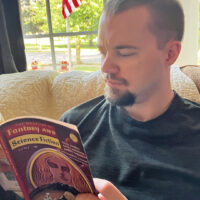
News from Elsewhere, by Edmund Cooper
Edmund Cooper is a British writer who has been active since the '50s, and up until recently I've not had the pleasure to read any of his work. He put out a novel just a month or two ago, and now here he is again, with a short collection called News from Elsewhere, featuring eight stories, only one of which is original to the collection. It was published in Britain last year but only just now got an American edition, courtesy of Berkley Medallion. Overall it's a mixed bag, since it looks like Cooper likes to repeat himself (there are three or four stories here about space expeditions), but the strongest material does make me curious for more. Let's take a look.
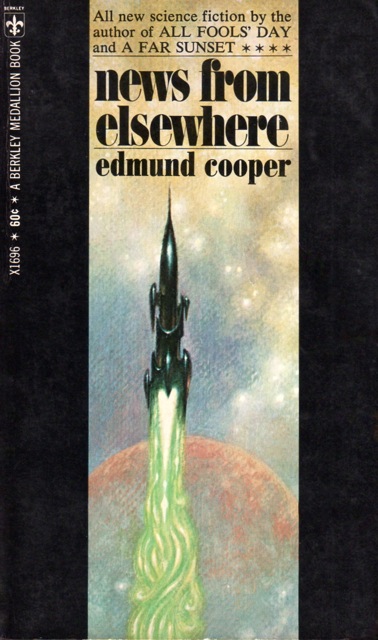
This is the only story to be first published in News from Elsewhere, and it’s… fine. It’s basically a fable, set in an icy and desolate world, about a young woman and her infant son as they travel with “the People of the Spur,” on a religious pilgrimage. The problem is that the woman’s son is a half-breed, a child-by-rape whose father is a “Changeling,” of a fellow humanoid race that whose members have hairy and thorny ridges on their backs. The woman tries to keep her son’s racial status a secret, but in trying to evade her people she literally falls into a chasm—and certain death. Cooper’s style here is almost childlike; there is barely any dialogue, and by the end it becomes clear what message we’re supposed to take from what is admittedly a harrowing adventure narrative. Cooper also saves the answer to the question “Is this science fiction or fantasy?” for the end, although I’m not sure why he treats it like a twist.
Three stars.

We jump from the newest story to one of the oldest, first published as “The End of the Journey” in the February 1956 issue of Fantastic Universe. “M 81: Ursa Major” is a space opera that asks a rather troubling question: “How do we know when we’re dead?” Or, to phrase it less threateningly: “How can we tell the difference, subjectively speaking, between being dead and being unconscious?” An experimental ship uses scientific mumbo jumbo to skirt the fact that it’s impossible to travel at the speed of light. The results are tragic, but also very strange—not least for the deeply jaded captain, who has a hunch that things will go wrong indeed. This is a story with a loose plot and only one genuine character to speak of, but it’s anchored by a strong idea. It’s the kind of story that was commonplace a decade and a half ago, but which now strikes me as a bit refreshing. I almost feel nostalgic about this sort of thing.
Four stars, but I understand if someone reads it and is not as impressed.
The Enlightened Ones
This one originally appeared in Cooper’s first collection, Tomorrow’s Gift. It’s the longest in the collection, and frankly, I’m not sure the length was justified. Long story short, a team of space explorers makes first contact with a race of hominids, who at first seem like primitive humans but who turn out to have a major advantage over the humans—only the humans are too concerned with what to do with the hominids at first to notice anything amiss. It’s a trite premise, even by the standards of a decade ago, that’s elevated by Cooper’s acute pessimism with regards to the notion of human supremacy. In this distant future it’s said that the Eskimos, Polynesians, and some other indigenous groups on Earth have been driven to extinction. Certainly the Campbellian protagonists do not come off well for the most part, and it shouldn’t come as a surprise that “The Enlightened Ones” (such an immediately ironic title) was printed in Fantastic Universe and not Astounding/Analog.
Three stars.
First published in the 1963 collection Tomorrow Came, which may sound unfamiliar because it never got an American printing. “Judgment Day” is the most British-sounding of the lot so far, to the point where it reads like the late John Wyndham at a hefty discount. At first it doesn’t even register as SF. The narrator and his wife are in the park one day when people around them start having violent seizures—too many in one place for this to be a random occurrence. Soon the narrator’s wife falls victim as well, and for much of the story we may be wondering about not just the cause, but the context for all this. What does any of this mean? The narrator meets a soldier who promptly feeds him enough information to stun an elephant, the result being that we’re told about something important that basically happens outside the confines of the page and which has already come to an end by the time the narrator hears about it. It’s rather inelegant, never mind that the SFnal element already feels outdated somehow.
Two stars.
The Intruders
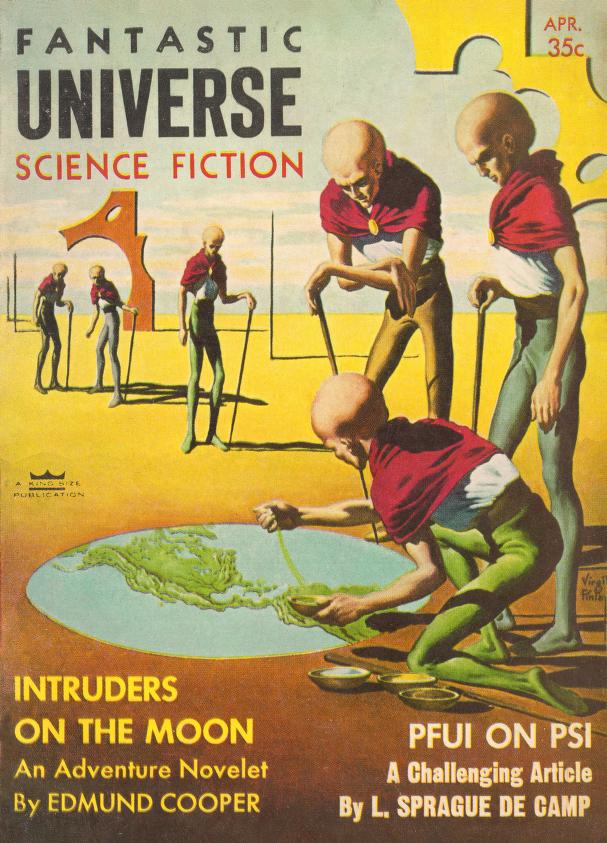
This one first appeared as “Intruders on the Moon” in the April 1957 issue of Fantastic Universe. Yes, this surely does read like an SF adventure story from a dozen years ago. A team of explorers land on our moon to investigate the massive crater that is Tycho, for mining as well as the slim possibility of discovering intelligent life. (Something I wish to make clear at this point is that Cooper’s characters are not usually “characters” in the Shakespearian sense; they do not tend to have distinguishable personalities.) Miraculously, however, one of the crew discovers footprints in the sand near Tycho—rather large footprints with very long strides, indeed too much to be a human’s. The explorers go looking for this “Man Friday” of theirs, but they soon learn to regret it. “The Intruders” is pretty straightforward for how long it is, and while its quaint vision of man’s landing on the moon would have been acceptable last decade, I can’t imagine there being much interest in a story of its sort now.
Two stars.
One of Cooper’s earliest stories, and a hand-me-down from Tomorrow’s Gift. A team of space explorers (oh God, not again) lands on “Planet Five,” where there doesn’t seem to be any organic life—save for a species of butterfly. The butterflies have a power over the human explorers they remain unaware of until it’s too late. But it’s not all bad: the explorers also have with them a smartass robot named Whizbang, who emerges as the story’s single genuine character. The autonomous robot comes off more human than the actual humans, although this may be Cooper’s intention, as he uses this disparity at the end of the story to somewhat chilling effect. I’m sensing repetition in the story selection, but I do tepidly recommend this one. If nothing else it comes close to “M 81: Ursa Major” in conveying Cooper’s thesis on the strenuous nature between human rationality and things in our universe which may be beyond human understanding.
A strong three stars.
The Lizard of Woz

This one first appeared in the August 1958 issue of Fantastic Universe, and it’s the crown jewel of the collection. “The Lizard of Woz,” aside from having an incredible title, is different from the others in that it is an outright comedy (albeit of a morbid hue), but it also is told from an alien’s perspective. Ynky is a member of a highly advanced race of alien lizards, who has been sent to Earth so as to determine if it is fit for “fumigation,” i.e., genocide on a planetary scale. The people Ynky comes into contact with (an American, then a Russian, then a third I would prefer to keep a secret) are caricatures, which is all well and good. Cooper pokes fun at both sides of the Iron Curtain, but overall this is a story about the absurdity of the notion of racial supremacy. We’re told constantly that the lizards of Woz are a superior race, yet they also have slave labor and are casually murderous with other sentient races, not to mention Ynky himself is rather slow-witted. Since this is a comedy, and a pretty silly one to boot, some people will be irritated by the antics, but I laughed several times over the span of its mere ten pages.
It’s ridiculous. I love it. Five stars.
Finally we have “Welcome Home,” which first appeared in Tomorrow Came and so this marks its first American appearance. Looking back at that time, it seems now like the early ‘60s were simply an extension (or the semi-stale leftovers) of the ‘50s, at least with regards to SF, because this story reads as a few years older than it is. A team of explorers (for the last time, we swear it) land on Mars, which is suspected of possibly hosting life, but if so life on Mars would be far down on the evolutionary ladder. As it turns out, a mysterious pyramid, a sophisticated structure, has drawn the explorers’ attention. This is a first-contact story—of a sort. The twist, which I won’t say here (although you can safely guess it), seemed oddly familiar to me. As with a few other stories in the collection, “Welcome Home” is about the conflict between the West and the Soviets, although it’s not of a ham-fisted sort. It’s fine, but nothing special or surprising.
Three stars.

by Jason Sacks
The Sky is Filled with Ships by Richard C. Meredith
It's the year 979 of the Federation, or the year 3493 in the old calendar. Captain Robert T. Janas of the Solar Trading Company, Terran by birth and starman by occupation, is journeying back to his home planet at a time Terra is in great peril.
The Federation, long bloated and often brutal, is facing a massive rebellion among its vast and angry colonies. A truly titanic armada of thousands of warships from hundreds of solar systems is streaming to Earth via subspace wormholes to gain freedom for the colonies. Janas knows the defense of his home planet will be a futile gesture. There is no possible way even the enormous Terran space fleet can overcome the overwhelming odds and passions of the furious rebels and their massively armed fleet.
Janas knows, too, that a victory by the rebels will spiral mankind down to a new dark ages, just as brutal and destructive as that of Europe after the fall of Rome. Only Janas has the insight and plan to preserve a smidgen of the wisdom — not by saving Terra but by making the Solar Trading Company one of the few institutions to survive and preserve galactic knowledge.

I'm not familiar with the fiction of Richard C. Meredith, but I'm curious to read more by him based on this book. I was pretty intrigued by lead character Janas, who has a nice kind of fish-out-of-water feel to him as he wanders around Earth. That alienation presents a clever, illuminating aspect of the character. I enjoyed having a protagonist who is both a highly self-assured man and who also feels uncomfortable at times due to certain aspects of Earth's culture.
For instance, there's a slightly poignant feel to his annoyance at Earth fashions- like a colonial returned to his home only to find it dramatically different from the place he left. Janas is a stiff military man on a planet where the men dress like harlequins and the women wear fashions which leave them bare-breasted and proud.
But all that discomfort contrasts with the depiction of Janas as a man of action. Like a classic sci-fi hero, Janas brings his own plans and friends to the office of Al Franken, leader of the STC but too blinded by his own hubris to understand he is the problem. Captain Janas literally drags Franken into a plot which will ensure the fall of the ruling Franken family and the survival of Janas's beloved STC.
Meredith adroitly alternates chapters of this palace intrigue with scenes of the armada flying through subspace and showing the massive devastation which the rebel fleet creates on its journey. Those invasion scenes have a breathless, telegraphical quality to them which convey a massive sense of urgency.
As the book winds up, Meredith also does a clever thing: in late chapters he shows brief snippets of events all around the planet Earth as the reality of the Terran apocalypse become clear. In East Asia an angry mob kills their governor and his whole family; in Australia, a cult climb a mountain and await their ends; a rural farmer stands at his barn door, shotgun in hand, waiting to do his small part.

Mr. Meredith, just over the age of 30, has created a clever and fun novel. There are points in which The Sky is Filled with Ships reads like a pretty standard potboiler sci-fi actioner, with square-chinned heroes fighting for noble causes. In that way it feels a bit of a throwback to the golden John W. Campbell days.
But I appreciated how the actions of our hero were focused on preserving society, which gave him a nobility which stood out on the page. As well, the scenes of oncoming invasion are exciting and had me quickly turning the pages.
I finished this relatively slim novel in one night. And though Meredith is no John Brunner, Philip K. Dick, or Harlan Ellison, he makes no effort to create literary science fiction with this novel. The Sky is Filled with Ships achieves what Meredith set out to create: an intriguing, exciting novel which will make me seek out some of his shorter fiction while I wait for the next thrilling novel by him.
3½ stars.

by Victoria Silverwolf
The Four-Gated City, by Doris Lessing

Cover art by Janet Halverson.
This is the fifth in a series of novels under the collective title of Children of Violence. The others are Martha Quest (1952), A Proper Marriage (1954), A Ripple from the Storm (1958), and Landlocked (1965). I haven't read the others.
A little research reveals that they all deal with Martha, the child of British parents working on a farm in colonial Africa. She's born in about 1920. The four novels all take place in southern Africa. As a teenager, Martha leaves home to work in a city. As the years go by, she is married and divorced and married again. She has a daughter whom she leaves in the care of others. She becomes involved in leftwing politics.
None of the earlier books have speculative elements. The newest one is different. At well over six hundred pages, it's also roughly twice as long as any of the previous volumes.
The sheer length and the very large number of characters and incidents make it difficult to offer a brief summary. I'll do what I can. Keep in mind that I'm leaving out the vast majority of the content of this massive novel.
Martha is now in London in about 1950. She gets a job as a secretary/housekeeper for a man who is married to a woman who is in and out of mental hospitals. She winds up living in the same household for many years, becoming involved with many other members of his family and their acquaintances.
Just to pick one example out of dozens, the man's brother is a scientist who defects to the Soviet Union. He leaves behind his wife and young son. The woman is a Jewish refugee from the Holocaust. When her husband leaves, she kills herself.
That's enough of a dramatic plot for a complete novel, but it only takes up a small portion of the book. Rather than attempt to relate any other events of equal importance, let me try to give you some idea of what the novel is like as a whole. Taking my inspiration from its title, I'll consider it as four different kinds of book in one.
Psychological Novel
Much of the text consists of Martha's interior monologues. She often looks at herself as if she were an outsider. At times, she withdraws from the rest of the world and spends time in a meditative, introspective state.
Novel of Character
Although Martha is the most important character, we also spend a great deal of time with lots of other people. In one section, the point of view shifts to Martha's elderly mother, who leaves Africa in order to visit her daughter. All the secondary characters are described in detail. There are so many of them that I sometimes lost track of who was related to whom. A dramatis personae for this book would take up several pages.
Social Novel
A large number of social and political issues come up in the novel. Just off the top of my head, these include Communism and anti-Communism, psychiatry, post-war austerity evolving into 1960's hedonism, the youth movement, the relationship between the sexes, the media, the environment, the military, espionage, homosexuality, colonialism and anti-colonialism, and economics. At times the novel resembles a series of debates.
Science Fiction Novel
You were wondering when I'd get to that! They take a while to show up, but speculative themes eventually make an appearance. The novel suggests that people diagnosed as schizophrenic are actually clairvoyant and telepathic. They are treated as mentally ill because they have visions and hear voices.
More to the point, the book's lengthy appendix consists of documents, mostly letters from Martha and other characters, describing how the United Kingdom and other parts of the world are devastated by what seems to be a combination of pollution, accidental release of nerve gas, plague, and radiation from nuclear weapons. Martha ends up with a small number of survivors on a tiny island. In true science fiction fashion, children born there have highly developed psychic powers.
Giving this book a rating is very difficult. Some people are going to hate it, and find slogging through very long sentences and paragraphs that go on for a page or more not worth the effort. Others will consider it to be a major literary achievement of great ambition.
I have very mixed feelings. At times I found it highly insightful; at other times I found it tedious.
Three stars, for lack of a better way to rate it.

by Cora Buhlert
A Five and Dime James Bond: Zero Cool by John Lange
This weekend, I attended a convention in the city of Neuss in the Rhineland. Luckily, West Germany has an excellent network of highways, the famous Autobahnen, so the three and a half hour trip was quite pleasant.
I left at dawn and took the opportunity to have breakfast at the brand-new service station Dammer Berge. Service stations are not exactly uncommon – you can find them roughly every fifty to sixty kilometers along the Germany's Autobahnen. There's always a parking lot, a gas station, a small shop, a restaurant and sometimes a motel, housed in fairly unremarkable buildings on either side of the highway.
Dammer Berge, however, is different. Billed as the service station of the future, the restaurant is a concrete bridge which spans the highway, held up by two steel pylons. The structure is spectacular, a beacon of modernism, though sadly the food itself was rather lacklustre: a cup of coffee that tasted of the soap used to clean the machine and a slice of stale apple cake.


But I'm not here to talk about architecture or food, but about books. Now the trusty paperback spinner rack at my local import bookstore does not hold solely science fiction and fantasy. There is also a motley mix of gothic romances, murder mysteries and thrillers available. And whenever the science fiction and fantasy selection on offer does not seem promising, I reach for one of those other genres. This is how I discovered John Lange, a thriller author whose novel Easy Go I read last year and enjoyed very much. So when I spotted a new John Lange novel named Zero Cool in that spinner rack, I of course picked it up.

Zero Cool starts with Peter Ross, an American radiologist who's supposed to present a paper at a medical conference in Barcelona. And since he's already in Spain, Ross plans to take the opportunity for a holiday on the nearby Costa Brava in the seaside resort of Tossa de Mar.
One of John Lange's greatest strengths is his atmospheric descriptions. His skills are on full display in Zero Cool in the descriptions of the rugged Costa Brava with its picturesque fishing villages turned holiday destination for package tourists from all over Europe. It's obvious that Lange has visited Spain in general and the Costa Brava in particular.


That doesn't mean that Lange doesn't take poetic licence. And so his protagonist Peter Ross notes that the beaches of the Costa Brava are full of beautiful women in bikinis with nary a man in sight. As someone who has actually visited said beaches, I can assure you that this isn't true. Like anywhere on the Mediterranean coast, the beaches of Tossa de Mar contain a motley mix of old and young, of men, women and children, of attractive and not so attractive bodies. And yes, there are women in bikinis, too. Ross has holiday fling with one of them, a British stewardess named Angela.
But in spite of what the cover may imply, Zero Cool is not a romance set in an exotic location, but a thriller. And so Ross finds himself accosted on the beach by a man who begs him not to do the autopsy or he will surely die. Ross is bemused—what autopsy? In any event, he is on vacation and besides, he's a radiologist, not a pathologist, dammit.
Not long after this encounter, Ross is approached by four men in black suits who could not seem more like gangsters if they wore signs saying "The Mob" 'round their necks. The men want Ross to perform – you guessed it – an autopsy on their deceased brother, so his body can be repatriated to the US. Ross protests that he is a radiologist, not a pathologist, but the men are very insistent. They offer Ross a lot of money and also threaten to kill him if he refuses.
In the end, Ross does perform the autopsy – not that he has any choice, because he is abducted at gunpoint. To no one's surprise, the four gangsters from central casting are not all that interested in how their alleged brother died, but want Ross to hide a package inside the body. Once again, Ross complies, since finding himself on the wrong end of a gun is very persuasive.
Up to now, Zero Cool seems to be a fairly routine thriller about an everyman who gets entangled in a criminal enterprise. But the novel takes a turn for the weird, when the body vanishes and people start dying horribly, mutilated beyond recognition. Ross not only finds himself a murder suspect – in a country which still garrottes convicted criminals – but other parties also show an interest in the missing body and the mysterious package inside. These other parties include Tex, a cartoonish Texan in a ten gallon hat, the Professor, a bald man who uses mathematics to predict the future and is basically Hari Seldon, if Hari had applied his skills to crime rather than to trying to save humanity from the dark ages, and – last but not least – the Count, a Spanish nobleman with dwarfism, who collects perfume bottles and lives in a castle with a mute butler, a flock of murderous falcons and a Doberman named Franco.
With its exotic locales (well, for Americans at least, since for West Germans the Costa Brava no longer feels all that exotic, when you can book a flight there via the Neckermann mail order catalogue), beautiful but duplicitous women and colourful villains, Zero Cool feels more like a James Bond adventure than a serious thriller. As for the mystery package, it doesn't contain anything as mundane as drugs (which was my initial suspicion), but a priceless emerald stolen by the Spanish conquistadores in Mexico. It all culminates in a showdown at the Alhambra palace in Granada, where Ross finds himself dodging bullets, poison gas and the razor-sharp talons of the Count's murder falcons.

It's all a lot of fun, though it still pales in comparison to the James Bond novels and films, which Zero Cool is clearly trying to emulate. Because unlike the suave agent on her majesty's secret service, Peter Ross just isn't very interesting. He literally is an everyman, an American doctor – and note that John Lange is the pen name used by a student at Harvard medical school who is financing his studies by writing thrillers – bouncing around Spain and France. In fact, Ross is probably the least interesting character in the whole novel. Furthermore, the fact that Ross is a radiologist, though constantly brought up, contributes nothing to the resolution. He might just as well have been a paediatrician or a gynaecologist or any other type of doctor for all it matters.
But even a lesser effort by John Lange is still better than most other thrillers in the paperback spinner rack. If John Lange becomes as good a doctor as he's a writer, his patients will be very lucky indeed.
An outrageous adventure. Three and a half stars.
(As mentioned above, John Lange is a pen name. However, I have it on good authority that his real name is "Michael Crichton" and that he has just published a science fiction novel under that byline. I haven't yet read it, but my colleague Joe has, so check out his review.)

by Joe Reid
The Andromeda Strain, by Michael Crichton
The story begins in the town of Piedmont, Arizona, in the United States. It’s a pretty unremarkable town, with one small exception: just about everyone in the town is lying dead in the street, all except for two men who traveled to Piedmont to recover some lost government property and an odd figure in the town of corpses who happens to be walking their way. Upon the apparent death of the two men, an investigation gets underway, ultimately led by a clandestine government group called Project Wildfire.

Project Wildfire is the brainchild of Dr. Jeremy Stone, a bacteriologist possessing so many awards and degrees that the story paints him as a modern-day Da Vinci, a man above men. His team includes Dr. Charles Burton, a pathologist; Dr. Mark Hall, a surgeon, and the only unmarried man on the team—the odd man as the story puts it; and lastly, Dr. Peter Leavitt, a microbiologist. The four men quickly fall into their roles as they uncover the cause of whatever killed an entire town full of people in one night and try to prevent it from spreading.
They do this working out of a secure, state-of-the-art research facility with a list of protocols to prevent the escape of diseases, viruses, and other deadly pathogens, longer than a football field. Part of the appeal of the story is the detailed descriptions of all the computers, machines, and medical facilities that the four doctors use in their quest. Crichton’s depiction of even the smallest details of the workings of every inch of the Wildfire facility give a grounded feel not only to the base but to the descriptions he provides of the microorganism at the heart of this story: the Andromeda Strain itself. Crichton beautifully has his characters follow the scientific method we all learned in grade school, as Stone and the others start with observation, then move to hypothesis, then experimentation. Every solution in the book is arrived at through the efforts of brilliant men under tremendous pressure. It is truly exciting to witness them work as each discovery and dead end leads to new discoveries and new dangers.
The pacing of The Andromeda Strain felt fitting to me. I never felt as if I was waiting for something to happen. Each scene in every chapter was packed with purpose and direction, each page wasted no space. Every character had a job to do, and each was one of the best in the world at that job. Regarding the characterizations, although the story is set in modern times, these men often felt as if they were the stoic men of bronze from 1950’s serials. The characters felt dated, but the problems they tackled were quite modern.
By the end of the book, the characters and the circumstances reached a good stopping point. The object of worry, the Andromeda Strain itself, proved a challenge that had taxed the heroes of the story to their very limits. Some issues are addressed, and others are left unresolved. In my own zeal for the story, I’ve taken great pains to avoid revealing too much of the plot. It is best experienced in real time. All I can say is that the journey this book takes you on is worth the time investment. It’s a stellar read.
But not a perfect one. This is a story that begins with the end in mind. With all the truly amazing events that unfold in the book, what stands out most are the constant reminders from the narrator that the story was already over. This was my first time reading a book written by Mr. Crichton. I don’t know if he employs this technique in his other works, but I would have preferred that he kept his internal monologuing to himself. In one instance, a character forgets to replicate an action that he had performed on some lab rats. Narrator: “Later we learned that was a mistake.” In another, a character makes assumptions about a biological process. Narrator: “That action wasted days of our time.” The narrator frequently shares tidbits of the future, a narrative tool I would call “Poor Man's Foreshadowing.” The Andromeda Strain is such an engaging and suspenseful tale that I wished to remain in the present throughout my reading without Crichton yanking me out of it, offering glimpses of a future I wanted to reach without shortcuts.
That minor gripe aside, The Andromeda Strain by Michael Crichton is a thrilling mystery with high stakes. It is the kind of fact-based science fiction that I enjoy the most.
Four stars

![[May 16, 1969] Strange Dreams (May Galactoscope)](https://galacticjourney.org/wp-content/uploads/2024/05/690516covers-672x372.jpg)


![[January 18, 1969] (February 1969 <i>Fantasy and Science Fiction</i>)](https://galacticjourney.org/wp-content/uploads/2024/01/690118cover-663x372.jpg)






![[May 20, 1968] Dying, deflating, and deorbiting (June 1968 <i>Fantasy and Science Fiction</i>)](https://galacticjourney.org/wp-content/uploads/2023/05/680520cover-665x372.jpg)





![[December 20, 1967] Smut! (January 1968 <i>Fantasy and Science Fiction</i>)](https://galacticjourney.org/wp-content/uploads/2022/12/671220cover-672x372.jpg)
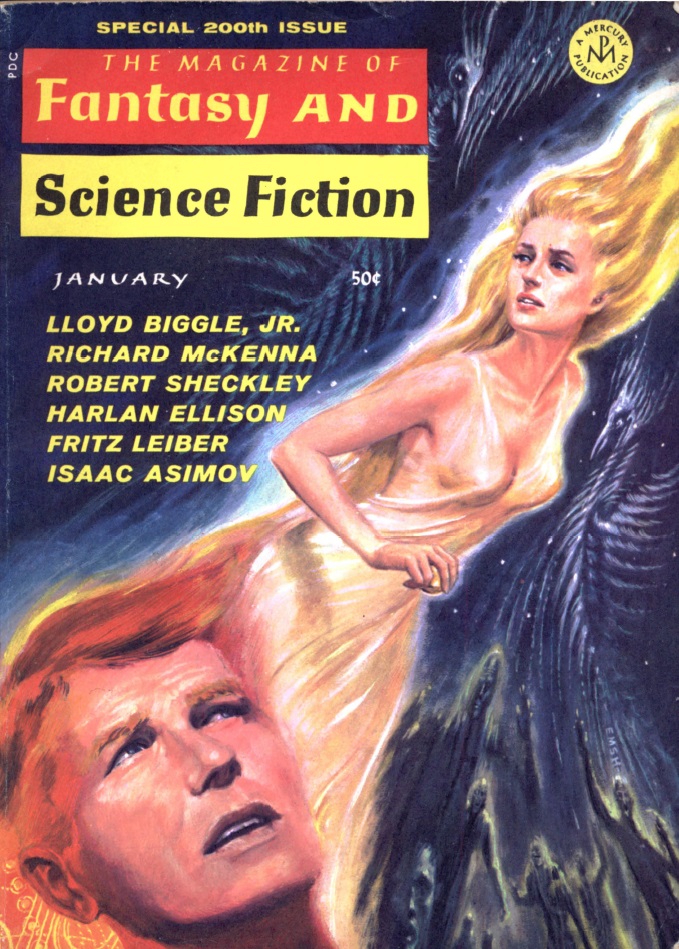
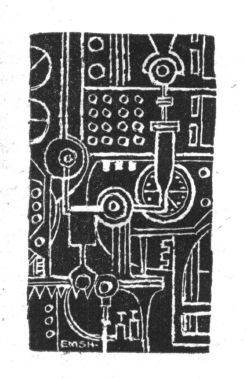
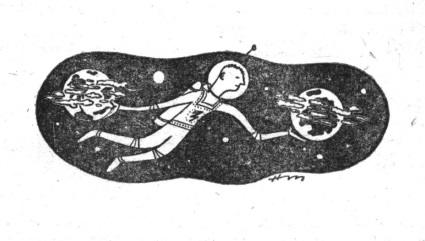
![[October 22, 1967] Equal Opportunity Employer (November 1967 <i>Fantasy and Science Fiction</i>)](https://galacticjourney.org/wp-content/uploads/2022/10/671022cover-663x372.jpg)


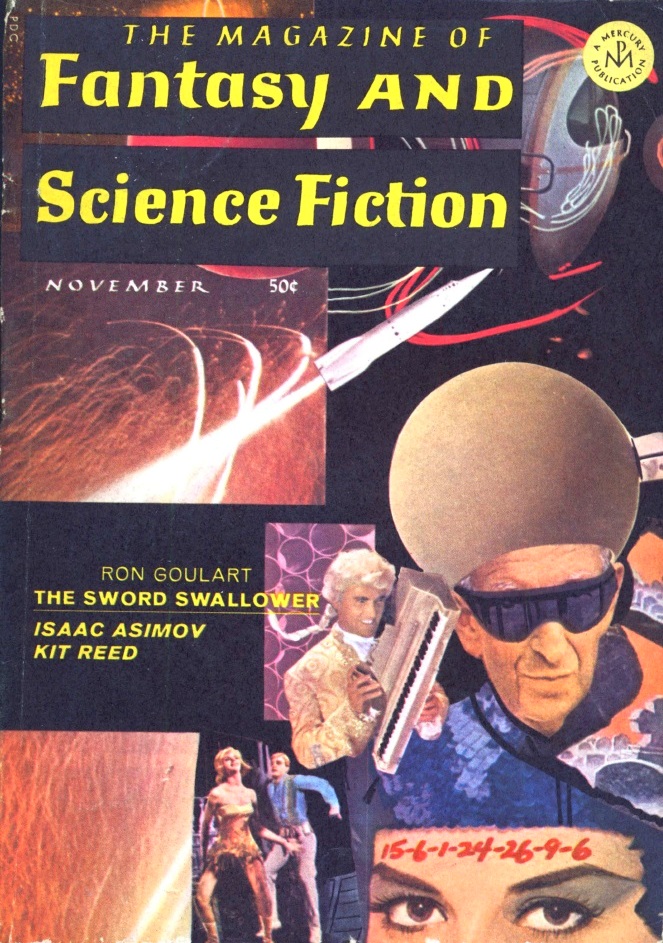
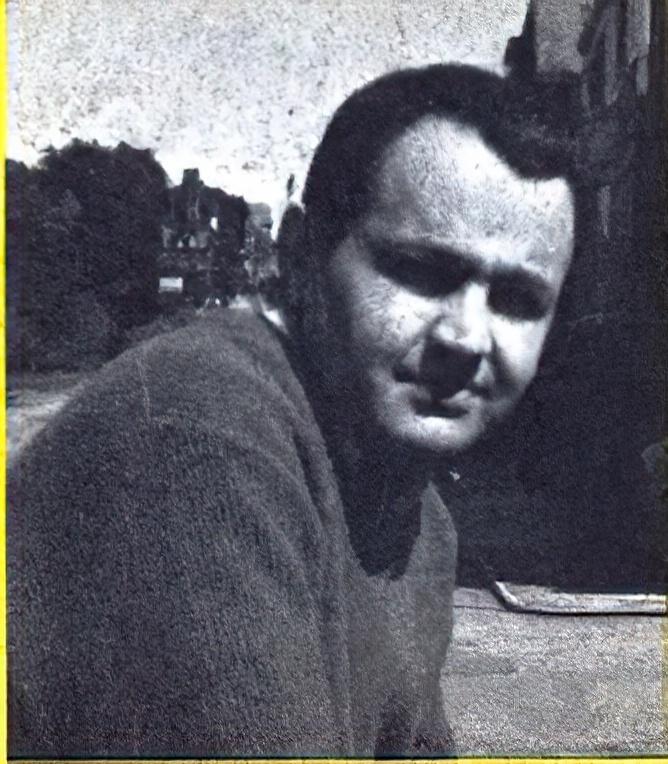

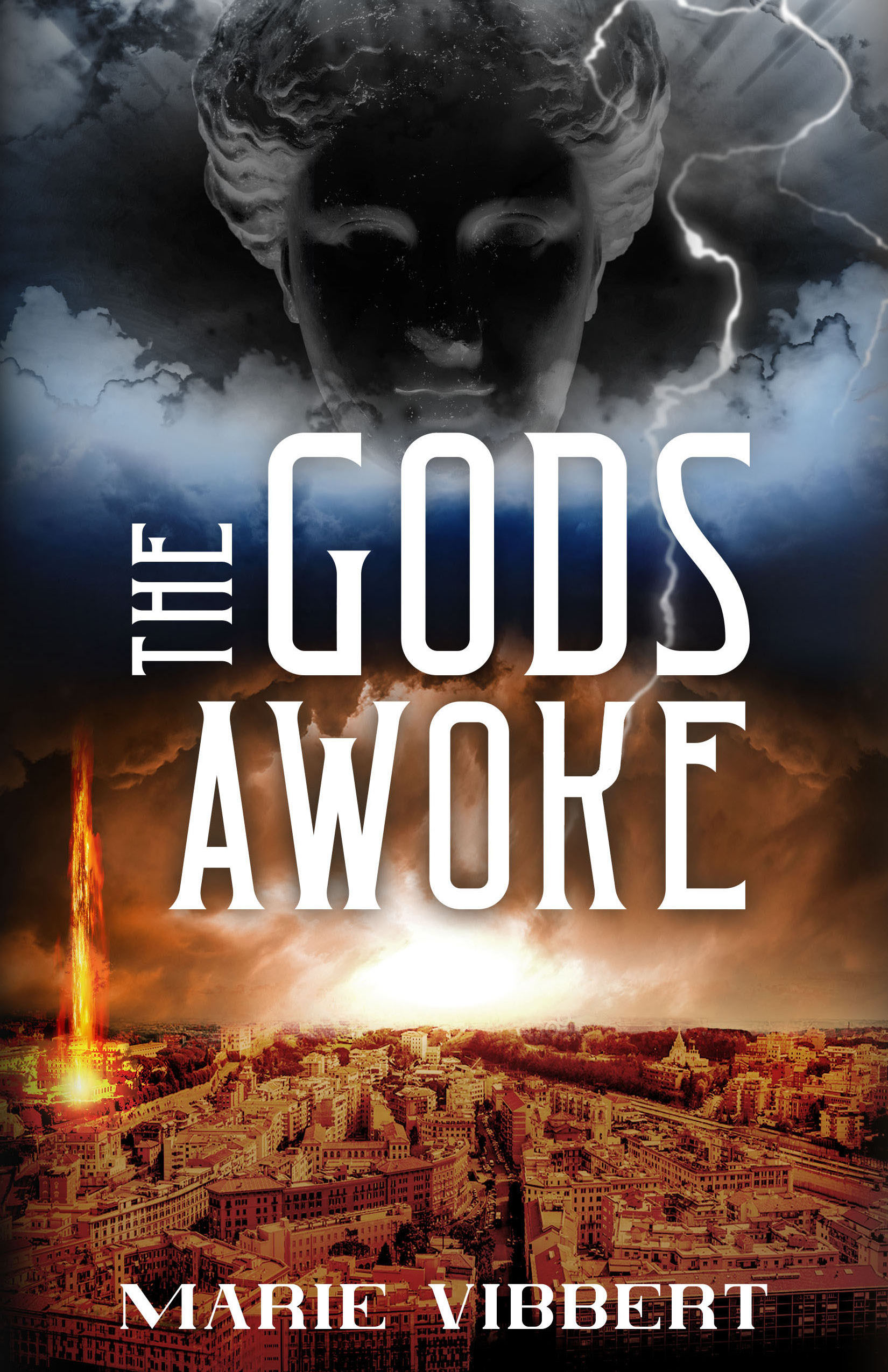
![[January 14, 1967] First batch (January Galactoscope)](https://galacticjourney.org/wp-content/uploads/2022/01/670114covers-672x372.jpg)

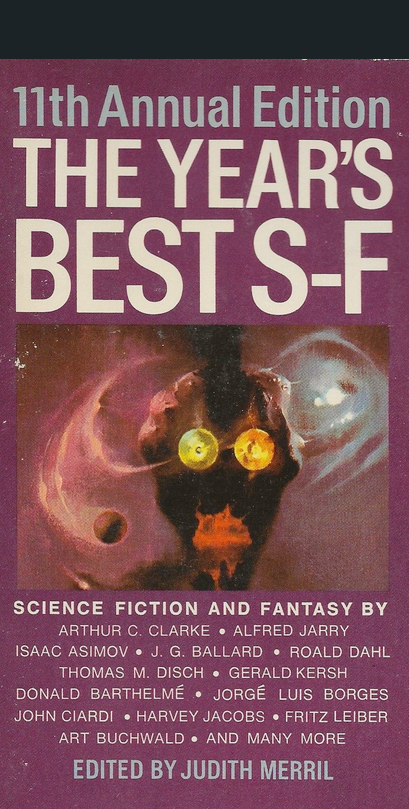

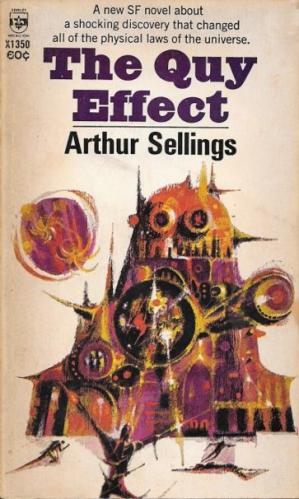
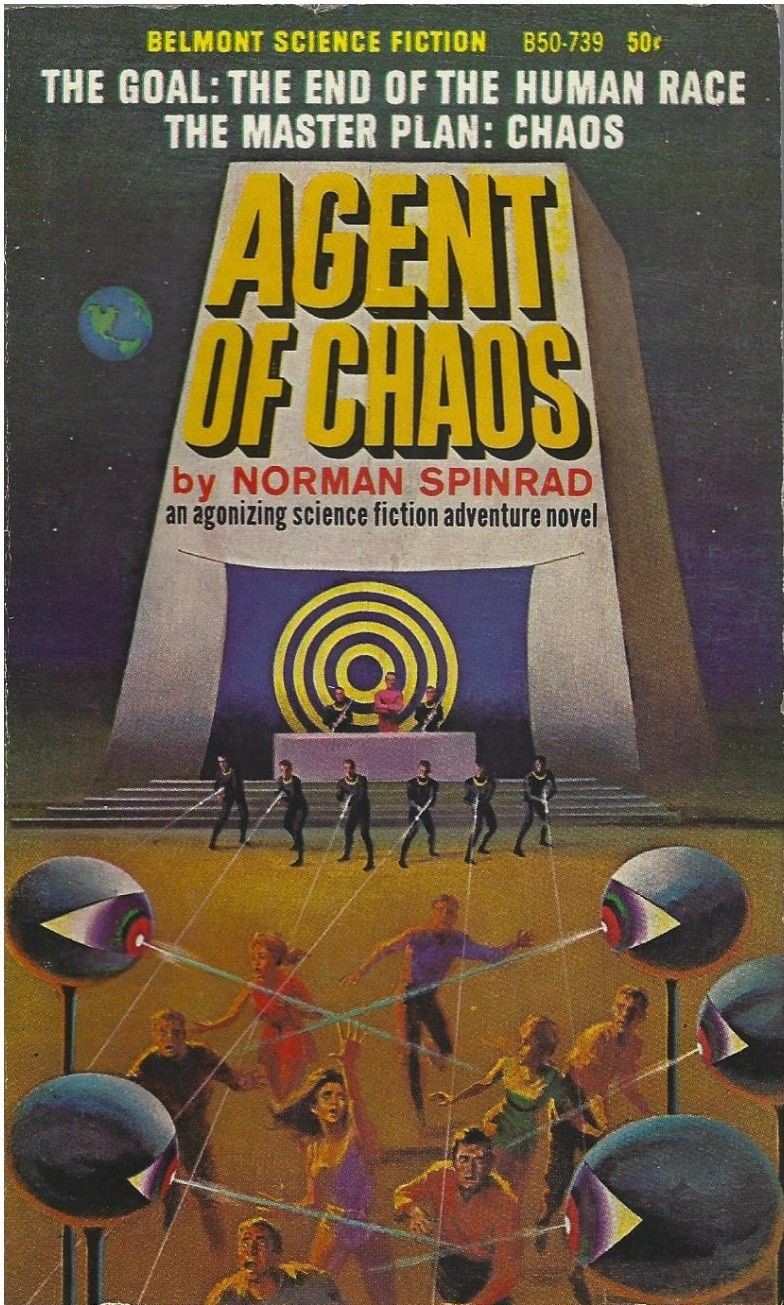
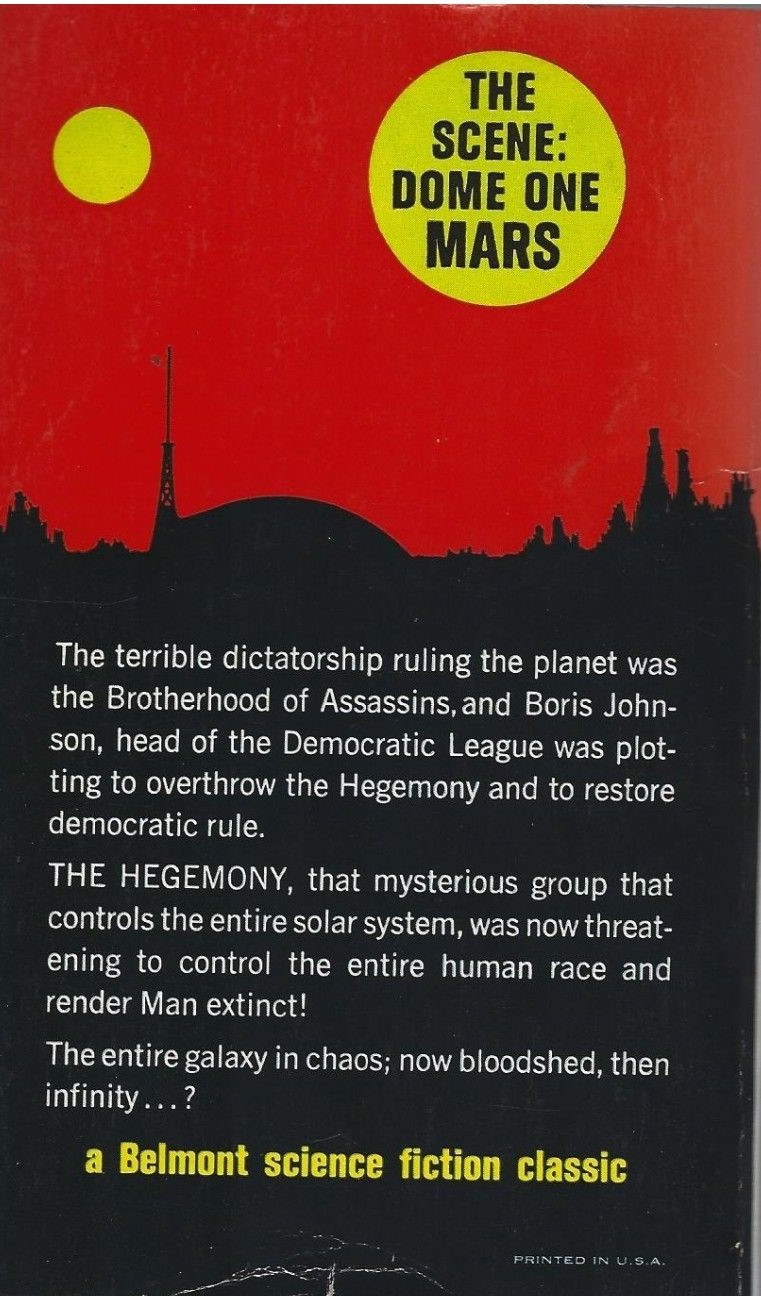
![[October 26, 1965] Mythology and Multiple Earths <i>Science Fantasy</i> and <i>New Worlds</i>, November 1965](https://galacticjourney.org/wp-content/uploads/2020/10/nw-sf-November-1965-672x372.jpg)



